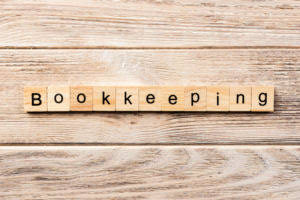Indian Ocean Trade AP World History: Modern Vocab, Definition, Explanations

Meanwhile, the janitor who deep cleans the kitchen or the point-of-sale system the restaurant purchased are services, not inventory. Therefore, the money owed to those vendors, or trade creditors, is under the wider umbrella of accounts payable. Trade payables are owed to vendors or suppliers that provide goods or services on credit terms. Until the payment is made, the amount appears under accounts payable on the balance sheet and must be managed to avoid delays or penalties. Effectively managing trade accounts payables and receivables is crucial for optimizing cash flow, maintaining strong supplier relationships and ensuring operational efficiency. Timely payments improve a company’s creditworthiness—leading to better financial stability and growth opportunities.
- When handled well, they support stronger cash flow and healthier vendor relationships.
- Accounts payable refers to the money owed to your creditors for goods or services already received.
- In many manual finance departments, trade payables are scattered across email threads, paper invoices, and spreadsheets.
- Most trade payable accounts are due for payment within a set period of time.
- Recording and auditing trade payables is essential to maintaining accurate financial records and managing vendor relationships effectively.
- Notes payables might be used when a company borrows money for a specific purpose, such as purchasing equipment or expanding its operations.
Where things stand for Trump in global tariff battle
Closely tracking the trade accounts payable helps in estimating when specific bills might become payable. This, in turn, enables them to plan ahead for them and repay the amount owed on time. This time, trade payables is debited, thus decreasing the balance and offsetting the increase from the invoice being received. The vendors who are essential to your business’s goods or services are the most valuable and depended on.
- Until the invoice is paid, the amount is recorded as a trade payable on the company’s balance sheet.
- By powering up your accounting platforms, you can get more of the fresh opportunities while automating the responsibilities.
- The credit period for trade payables is generally between 30 and 60 days.
- It is also important to not rely on a single vendor too much to avoid supply chain issues.
- Trade Payable is the amount owed to the creditors for the supplies, materials, or services received.
HighRadius Named as a Leader in the 2024 Gartner® Magic Quadrant™ for Invoice-to-Cash Applications
Suddenly, you’re captured, marched to the coast, and forced onto a European slave ship. In the dark, crowded hold, you’re surrounded by strangers speaking unfamiliar languages. This horrifying journey, known as the Middle Passage, shows the inhumanity at the heart of the Transatlantic Slave Trade. The second part of the journey, known as the Middle Passage, was the forced crossing from West Africa to the Americas.

Business Bridging Loans and Mortgages For Purchase Finance
Operational expenses, overhead expenses, and capital expenditures can all be categorized as accounts payable so long as it’s a purchase made on credit directly from a vendor or supplier. The disadvantages of using trade payables primarily have to do with the challenge of tracking what the company owes to whom, as it scales. Regular auditing of trade payables helps catch errors early, ensure completeness, and maintain financial trade ap accuracy.
- Use automation tools – Leverage accounts payable automation to flag inconsistencies and reduce manual work.
- This interest cost represents the company compensating its creditors for lending funds.
- This includes liabilities such as office rent or consulting services.
- By not needing to have large sums of capital on hand, you can save yourself from turning to a loan, financing, or external investment to start generating revenue.
- The best practice to follow is to review the recorded cash disbursements subsequent to the corresponding balance sheet date.
- Understanding the difference between accounts payable and trade payable is essential for maintaining a healthy financial operation.
Vendor Code of Conduct

Accounts payable refers to the money owed to your creditors for goods or services already received. This money is generally due in a short period, ranging from a day to a few months, and hence comes under short-term liabilities. Accounts Payable (AP) includes all short-term liabilities for operational expenses, such as services, utilities, and office supplies. Trade Payable (TP) is a subset of AP, specifically covering payments for raw materials or inventory needed for production or resale. Understanding the difference between accounts payable and trade payable is essential for maintaining a healthy financial operation. While both are liabilities, they serve different purposes and require distinct management strategies.
Employers are responsible for paying federal and state payroll taxes, unemployment taxes and social security. Employers set aside this money all year long until these taxes and payments are due. Until the actual transaction is made, where employer pays payroll taxes, the funds are held in a bank account QuickBooks and considered to be an accrued liability.
Accounts payable vs trade payable: what’s the difference?

In a manual finance setup, this process usually involves spreadsheets, paper invoices, and a lot of back-and-forth verification. Accounts payable is a critical element of financial management, reflecting a company’s short-term obligations and influencing its cash flow and vendor relationships. QuickBooks ProAdvisor Properly managing accounts payable ensures that businesses meet their obligations while maintaining liquidity and fostering strong supplier partnerships. By leveraging accounts payable automation, businesses can streamline processes, improve accuracy, and enhance cash flow management.

Business Finance Training
Of course, China has also spent several years preparing for a trade war. Chartered accountant Michael Brown is the founder and CEO of Double Entry Bookkeeping. He has worked as an accountant and consultant for more than 25 years and has built financial models for all types of industries. He has been the CFO or controller of both small and medium sized companies and has run small businesses of his own. He has been a manager and an auditor with Deloitte, a big 4 accountancy firm, and holds a degree from Loughborough University. If those relate to some capex, then the credit period can be even more than a year.











